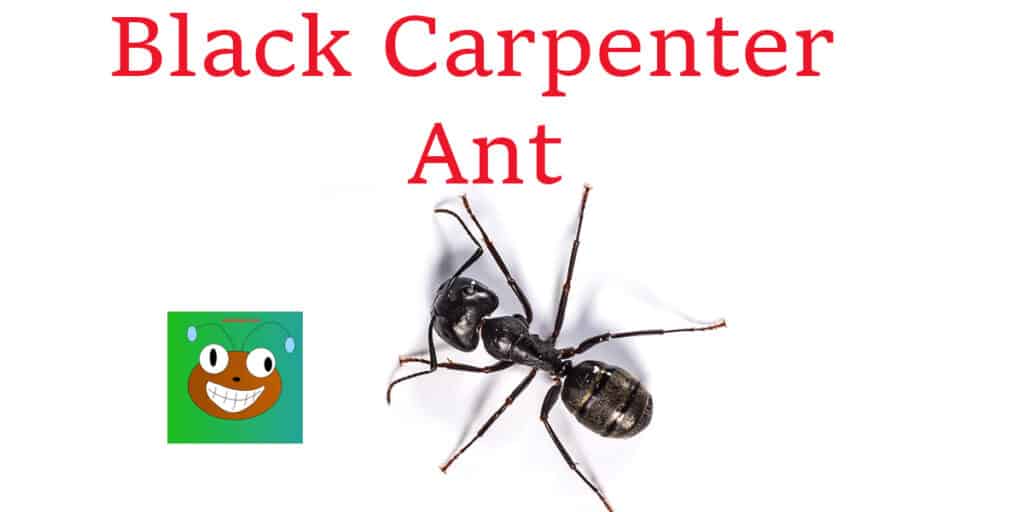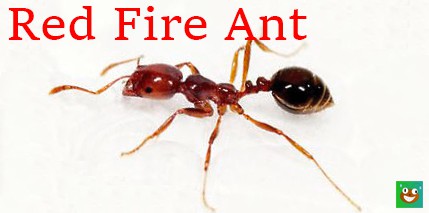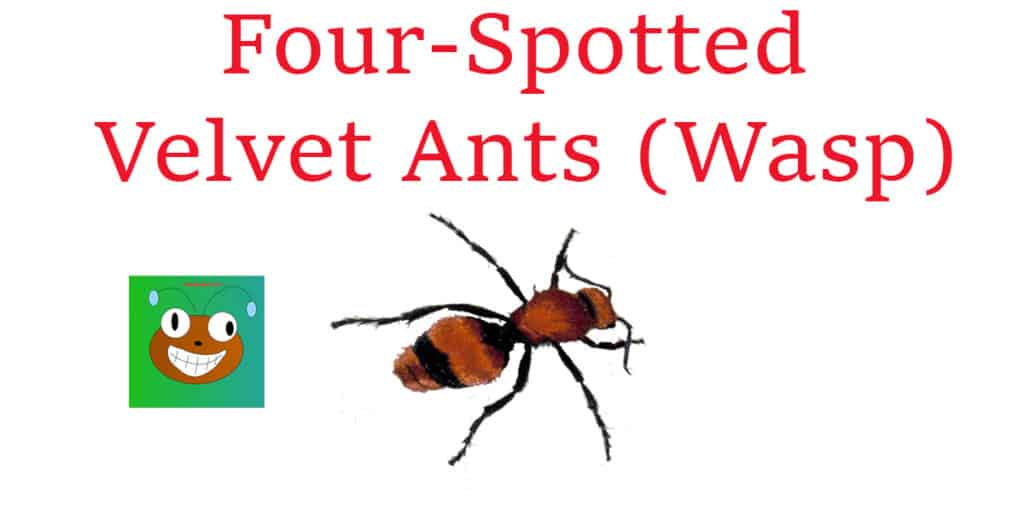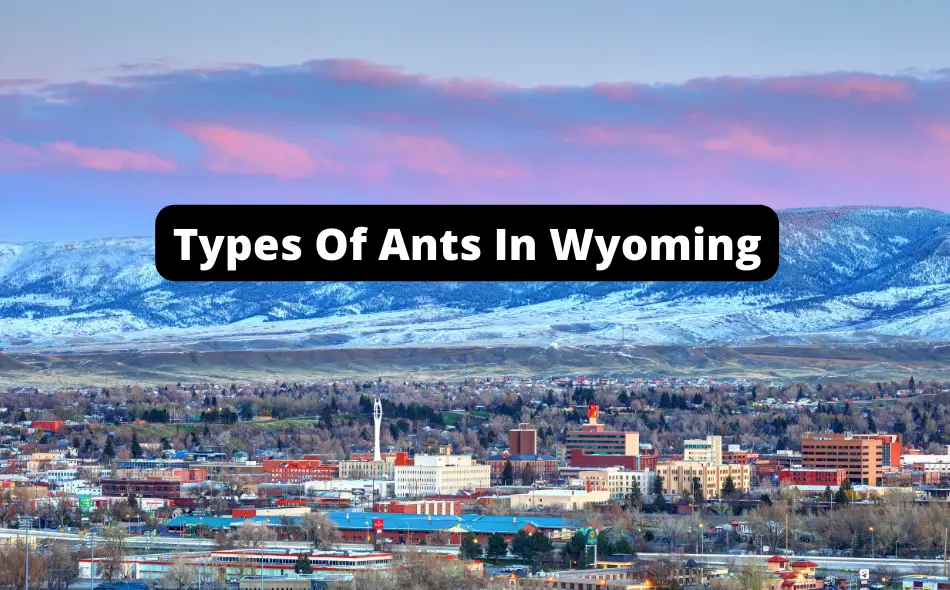While Wyoming is known for its sweeping mountain ranges, national parks like Yellowstone and Grand Teton, and outdoor recreation opportunities, we must mention the state’s abundant wildlife.
From majestic elk and bison to elusive wolves and grizzly bears, Wyoming’s diverse ecosystem is home to some of the most iconic and sought-after animals in North America. Additionally, the state boasts unique geological formations like the Devils Tower and the Red Desert, offering visitors a chance to explore the natural wonders of the American West.
While all of this is nice, we can’t forget the cool ants that are in Wyoming These ants listed below would be perfect to start your ant-keeping journey, as they’re well-adjusted to Wyoming’s humidity, water, and temperature!
Types Of Ants In Wyoming
Wyoming has many cool different ants; these include Amazon Ants, Bigheaded Ants, Carpenter Ants, Crazy Ants, Fire Ants, Formica Ants, Four-Spotted Velvet Ants, ‘Pharaoh Ants, Red harvester Ants, Red Pavement Ants and Velvet Ants
Carpenter Ant
Carpenter ants got their name because they dig wood to make their nests, creating neat tunnels within the wood.
These ants will only chew and burrow through the wood to build nests; Interestingly, they do not consume wood.
Depending on the species, Carpenter ants’ length ranges from 12 to 25 mm.
Carpenter ants that are black are frequent pests, but these insects can also be all-black, all-red, or all-brown.
When mature, the black western carpenter ants colony has ten to twenty thousand workers.



Incredibly, some big colonies have more than fifty thousand ants.
In most territories, there is only one active, wingless Queen. The colony must be older than two years before the production of swarmers takes place (potential new queens).
Instead, swarmers are produced the year before and kept in the nest during winter in preparation for the ensuing years’ dispersal.
In the east of the US, swarmers arrive from May through August, whereas in the west, they appear from February till June.
Crazy Ant
The Gulf Coast area has recently been overrun by the golden crazy ant, also known as Nylanderia fulva.
These American species thrive in unaltered natural settings and have been impacted by human habitation and pollution.
Infestations discovered in Houston circa 2002 are now dispersed and may be found along the Gulf Coast and the Hill Country to the northwest.
The diameter of a single infestation can measure kilometers, and they are approximately 1/8 of an inch in size.

In the areas where these ants establish themselves, they expand into incredibly dense colonies, displacing local ants and numerous arthropods, including the foreign fire ant which came earlier.
Additionally, these ants pose a hazard to all other species.
The success of creatures that need nesting sites undoubtedly decreases as the invertebrate food base shrinks.
Furthermore, because of the ant’s immense population, their own lives will be directly impacted.
The decline in the invertebrate food source affects everyone in the region, including the colony.
Red Imported Fire Ant
Some of the approximately 200 distinct insects in the genera are known as “fire ants.”
Due to their red color, they do not belong to the subspecies Solenopsis Richteri.
Many of the names possessed by each species of Solenopsis are commonly used interchangeably when referring to each other, such as the term “red ant.”
The three body parts of adult fire ants are the skull, the thoracic, and the abdomen, along with three sets of limbs and a group of antennas.
Luckily, this is the same as the anatomy of all other adult insects.
The red fire ant has a golden-brown skull with a dark metasoma (abdomen).
The ants vary in length from 2 – 6 mm and are two colored, black and red.

An easy way to identify a fire ant is by its dark abdomen and contrasting red thorax.
These ants are aggressive, eat anything in their path, and breed at an accelerated pace.
Fire ants can become worker ants in just 15 days. These ants are officially a pest in the United States, consuming over 300 million acres.
Formica Ants
The Formica Ant is a sizable Ant that claims a home in northern regions of the world.
These ants are widespread all over the northern hemisphere.
Numerous well-studied members are in this genus, but tons are almost “undiscovered.”
Most of these species lack a formal taxonomic classification and are not well defined.
Therefore, Its taxonomy is divided into a significant number of minor categories.
Without getting into the drama of ant classification, some Myremcologists will refer to this ant as the Wood Ant.
These ants are between 4 and 8 mm long.
Most Formica Ants reside in wilderness settings with lots of trees and land.
This allows them to build mounds or hide in trees, as their common name suggests (Wood Ant).
These ants value sunshine and need it to thrive.
While many ants avoid humans, these ants seem to prefer them.
These ants do not survive well in regular ecosystems and do better in artificial environments.
As a result, they frequently make their nests close to man-made objects like sidewalks, railings, or building bases found in the suburbs.
Four-Spotted Velvet Ants
One of my favorite… wasps?
Yes, you heard that right – this isn’t even an ant.
Due to its extreme similarity to regular ants and common misconceptions.
However, the Four-spotted Velvet Ant does not build nests, is not social, and should not be kept during ant-keeping because… it’s not an ant.
As this is genuinely a wasp, its deceptive name might confuse you.
Females typically wander over pavement, terraces, sidewalks, or streets.
In contrast, males possess wings and can fly and look like regular wasps.

Efforts to catch the female may set off her severe protective reaction, which is reported to be excruciatingly painful.
While they have a powerful sting, they aren’t very aggressive and only sting in defense.
The velvet part of their name comes from the tiny hairs all over their body that mimics a velvet cloth.
The four-spotted part comes from the blend of different colors on their abdomen, a base, and the spots.
The base colors include orange, red, black, and many blends.
As the belly tapers toward a tip, bands of golden hairs span it.
The four spots might be a mixture of unique colors like creamy yellow, crimson, or orange hues.
These wasps are pretty big, with average sizes of around 19mm.
Remember, there is no queen or worker-size split here because it’s a wasp.
While there is a ton of variation amongst them, some might not have any spots, while others might have four spots of the same size.
Pharaoh Ant
Another smaller and at about 2.4 mm (1/16 Inches), and interestingly the males and worker ants are actually the same size (not the Queen).
This ant can quickly become a nightmare if it infests your home, as it can survive even the most advanced household pest control attempts.

These ants will eat everything and are well known for infesting hospitals and other large corporate buildings that offer a cafeteria.
Because these ants don’t need soil or other substrates to create nests, they can infiltrate a building and start building out a home anywhere.
These ants do not care where they put their nest and have been seen nesting in everything from electrical wiring to underground sewage systems.
A unique (and sad) fact about Pharaoh Ants is that they have been caught feeding on the flesh of burn victims and are known for transferring diseases within hospitals.
Red Pavement Ants
Red pavement ants are a small species, with worker ants only reaching sizes between 2.75–3.2 mm.

Red Pavement Ant’s nests are typically found on asphalt, concrete roads, sidewalks, or parking lots.
This makes them dangerous, as numerous ants may climb up shoes and legs when you stomp on a nest, where they may bite.
Luckily, these bites do not cause any real concern.
However, even with their small size, the Red Pavement Ants’ bite can still hurt, as these ants contain formic acid.
These ants are always looking for food, and being near residential areas usually leads these ants to be in close contact with humans.
Red Pavement Ants frequently discover spilled food items and quickly call the rest of the colony.
Within a few minutes of locating dropped food, these ants will assemble lines to start bringing it back to their nest.
These ants are polygynous, meaning they will have multiple queen ants within one nest.
This means there will be a rapid production of eggs and larvae for the colony.
The Red Pavement Queen ant size will be much bigger than the worker ants, going upwards of 8mm.
This species will have winged males and females.
It’s common to get these ants mistaken for termites due to their small size and similar bodies.
However, while still a pest, these ants cause substantially less damage than termites.
Eventually, once colonies have reached capacity, some queens will deviate to create their nests.
This leads to an even faster expansion of the species.

